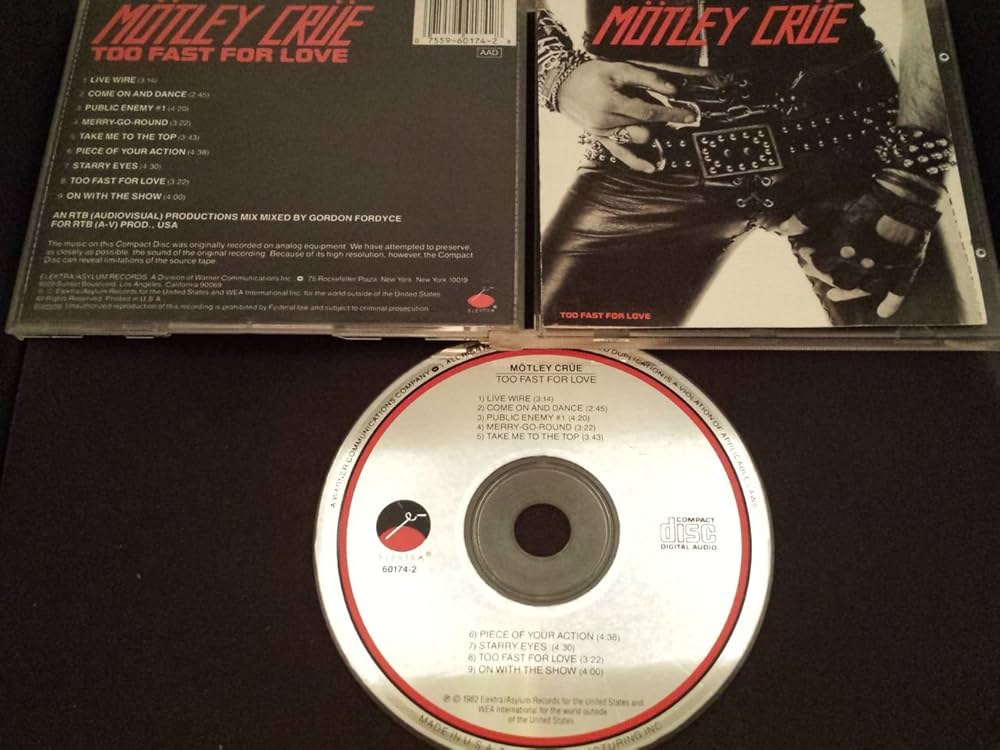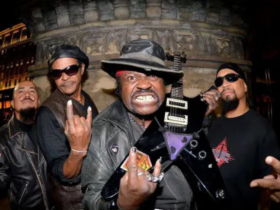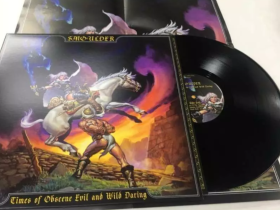(TheBRHM.com) Welcome to another “Greatest Album Debuts” where we look at debut albums that either caught my attention or are generally beloved. Many of them are albums I checked out when I began listening to metal—such as our featured album 1981’s Too Fast for Love from Mötley Crüe.
When it comes to Crüe, I was introduced through the music videos that played on MTV and VH1 in the 1990s. The first song I remember from them was “Dr. Feelgood” which was still getting play on MTV and The Box—“Music Television You Control”—into 1990-1991. Thinking back, Metallica’s “One” still got play on The Box in the early 1990s. Someone in the Greater Birmingham market had the song code for that particular Metallica song and often requested it around the same time on the weekend.

We’ll look at Too Fast for Love and the strength of both sides of the album as well as the standout tunes on both sides. Finally, we’ll look at the strength of the opening track and see if there were better openers to set the pace or define the album. As for the release, we used the Elektra Records which features nine tracks and is available on most popular streaming platforms.
Let’s get to it!
The A-Side of Too Fast for Love
Starting things off, we have five tracks for the A-side. The album opens with “Live Wire” and as stated before, we tend to spotlight the opening track towards the end. However, just as a track without the distinction of being the opening or closing track, “Live Wire” slams on its own. Looking at the rest of the A-side, we do have good tracks such as “Public Enemy #1” and “Take Me to the Top” but those tracks are like a soft-good.
I wouldn’t say without a doubt those two tracks are good at the minimum. It’s more like that those songs have enough good to them to be a “good tracks” but there’s an element of the songs that keep them in flux. That’s very different from “Live Wire” which is just a fun, high-energy song with some bite to it. “Come On and Dance” rides and isn’t exactly high-energy but it isn’t lethargic either.
It’s an interesting song as the A-side has some speed to the tracks and this song isn’t exactly rapid.
Standout Tracks: Live Wire**, Merry-Go-Round, Take Me to the Top
The B-Side
There are some albums that have a B-side that is surprisingly better than the A-side—the first impression side. You also have albums where that side could be considered awful and unnecessary—replace the material, re-record it, or just make it an EP. The B-side of Too Fast for Love doesn’t fall into either of those categories.
It’s probably the most B-side of any B-side I’ve written on. The majority of the songs on here are fine but “Starry Eyes” stands out the most. It’s not as fast as I prefer in my music but it’s good. I had to give this side more listens to see if anything else would catch my attention enough and “Too Fast for Love” is another solid track that was worth an “I like this sh**” replay—just not as many as “Live Wire” or “Starry Eyes”.
“Piece of Your Action” kicks off the B-side and works as the opener to that side. While I prefer “Starry Eyes” more, it wouldn’t do as the B-side opener—unless you need something to break up the somewhat speedy pace of the A-side. I will say that “Too Fast for Love” could easily replace “Piece of Your Action”.
Standout Tracks: Starry Eyes*, Too Fast for Love
Strength of the Opener: Live Wire
As an opener, “Live Wire” is perfect for this album. There’s honestly no other songs that would do to kick things off. “Piece of Your Action” is fine in the middle of the album but it could’ve swapped places with one of the other tracks on the A-side.
In regards to the album as a whole, continuous listen; Vince Neil’s vocals added to the songs but they could bombard you from song to song—and not in good way all the time. It was actually the reason why the B-side required more listens while I was taking notes, the singing and the shape it took in each song made most of the songs sound similar even if the guitars and drums were doing something different for a different song.
It makes me wonder how this album would’ve been recorded or sounded when Shout at the Devil came out two years later. Of course, I’d want to keep Shout at the Devil because it’s another good album and a strong follow- up to Too Fast for Love.
Staff Writer; James “Metal” Swift Jr.
This talented writer is also a podcast host, and comic book fan who loves all things old school. One may also find him on Twitter at; metalswift.










Leave a Reply